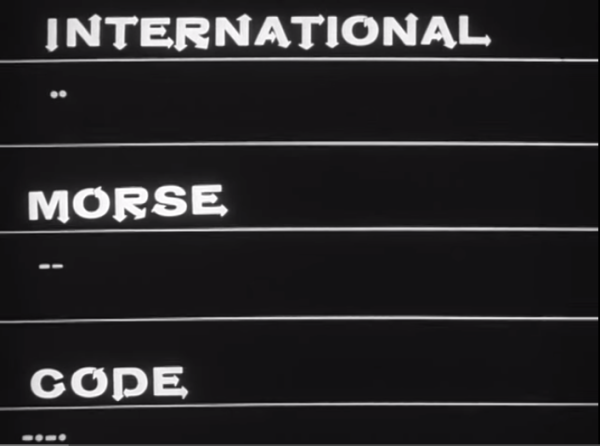There’s a lot to learn from this 1966 Army training film about the International Morse Code, but the most crucial component of good keying is rhythm. A young man named [Owens] demonstrates very clean keying, and the instructor points out that skill is the product of sending uniform and short dits, uniform and short dahs, and correct spacing between dits, dahs, letters, and words.
Throughout the film, there are title cards in a typeface that shows the stroke order of military printing. The instructor points this out after a brief interlude about the phonetic alphabet (Alpha, Bravo, Charlie, &c). Right away, we see that the Morse Code for ‘H’ is four dits that gallop with the rhythm of a horse in a hurry to get to the hotel.
 Such clever and memorable pictures are painted for a few other letters. We wish he would have covered them all, but that’s not the aim of this film. The Army is more concerned with good, clean rhythm and proper spacing that marks the difference between ‘low’ planes and ‘enemy’ planes. There’s a simple, three-step plan to getting what is called a ‘good fist’, and the Army demonstrates this in the best possible way: a giant J-38 and fake hand descending from the ceiling to match. Yes, really.
Such clever and memorable pictures are painted for a few other letters. We wish he would have covered them all, but that’s not the aim of this film. The Army is more concerned with good, clean rhythm and proper spacing that marks the difference between ‘low’ planes and ‘enemy’ planes. There’s a simple, three-step plan to getting what is called a ‘good fist’, and the Army demonstrates this in the best possible way: a giant J-38 and fake hand descending from the ceiling to match. Yes, really.
The first step is to adjust the key to ensure good contact alignment, proper gap spacing, and ideal spring tension. The second step is to develop good technique by resting one’s elbow on the table and holding the key rather than slapping it. The third step is simply to practice. Learning through imitation is helpful, as is taping one’s practice sessions and playing them back. [Owens] likes to use an RD-60 code recorder, which immortalizes his signals in ink.
Continue reading “Retrotechtacular: ⋅⋅⋅⋅ ––– ⋅–– – ––– –– ––– ⋅–⋅ ⋅⋅⋅ ⋅ –⋅–⋅ ––– –⋅⋅ ⋅”











